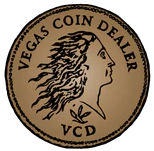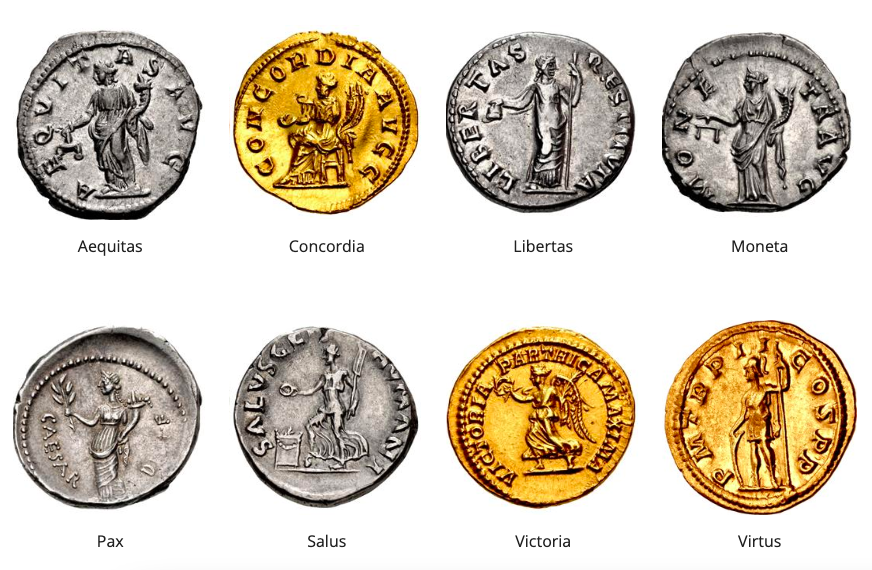Introduction to Ancient Roman Imperial Coins
Perhaps the most common and readily available ancient coins on the market today involve imperial Roman variety. Whether it is the silver denarius or the late bronze fractionals, many collectors find their roots in these cheap series. Roman coins have not always been common. As early as 250 years ago, Roman coins, however, were as rare as any other ancient coin. The first notable coin hoards of bronze coins were found towards the modern industrial age, which created a shift in coin collecting culture. Before, collecting ancient coins became a hobby only the elitists could enjoy. With a notable amount of hoards being uncovered, coins could be enjoyed by the general public. With a more extensive collector base, there was a demand for knowledge of numismatics. The first notable book on coins was published in 1514, written by Guillaume Budé, called De Asse et Partibus. It details ancient coins and their values, in an attempt to compare them to modern day standards.
The term “Imperial” refers to the time of the empire starting at Caesar Augustus around 14 BC. Augustus became the first emperor of Rome after the fall of the Republic. He expanded Rome’s borders, created a central government, and assembled a vast military which unified peoples. As the imperial period progressed, Roman culture began to mix with other cultures assimilated into the empire. This change is reflected in coinage, as the focus on the arts and culture digressed, the coins became thinner and more stylized. The impact coinage had on the populous diminished and they were left with inflated currency that had little backing by the imperial government. Bronze coins were silver plated by the government to pass them off as pure silver coins. People subsequently lost trust in their coinage and it eventually led to a complete collapse in the western empire.
Roman coins were first produced as early as 400 BC during the early republic and continued on for over eight hundred more years. Roman coins were commonly made of copper, brass, bronze, silver, and compounds called orichalcum and billon. At first the coins were only minted in Rome, but then branch mints all across the empire gradually started minting more coins of different varieties. The earliest coins showed a god or deity on the obverse, and an animal or symbol on the reverse. In 49 BC, Julius Caesar became the first Roman politician to place his portrait on circulating coinage. It helps to know the story behind a coin. What is depicted? Who has previously owned it? What historical event does it depict?
Even so, the minting of coins remained the same for the next thousand years. During the minting process, coins started out as blanks which were casted by pouring molten metal into small circular molds. Blanks with too much weight were shaved down to the required weight, and blanks under the requirements were re-casted. The next step of this process is transferring these standardized blanks into currency. Two metal dies with the negative impressions of an obverse and reverse are placed on both sides of the blank. To set the die, the obverse would be set into an immovable object such as a rock or an anvil. The coin is placed on top of this and the reverse die is locked in as well. Then the reverse die is struck hard by a heavy hammer. The result is finished and the process is continued until the dies wear out or break.

Imperial gold Solidus of emperor Theodosius I (381 AD)
Photo Courtesy of Classical Numismatics Group LLC
Identifying Roman Coins
Obverse
Save for provincial coinage, all official Roman coins are inscribed in Latin. As Latin is so similar to English, it is easy to pick up on certain phrases that have similar meanings to common words. The language does not contain any U's or J's, and instead replaces the letter V and I as placeholders. If spacing does occur in a coin’s legend, a simple • will replace the space. Many words will be abbreviated. Caesar, as an example, may be replaced with “CAES” or “C”.
For an obverse, depending on the emperor and time period, the obverse portrait would have a distinct crown and diadem. The terms used for the obverse portraits are laureate for a portrait with a laurel crown, radiate for a portrait with a spiked crown, and diademed for a portrait with a woven crown. When an emperor is draped, it means the bust shows the neck and shoulders of the emperor. When a bust is just a head, the portrait only goes down to the bottom of the neck. Terminology such as cuirassed and pearl diademed are often used to describe the garments on which the emperor wears on his portrait. A cuirass is a shoulder breastplate that was worn underneath a garment and a pearl diadem is a diademed crown embroidered with pearls.
The later coins frequently show an emperor holding certain objects as a symbolism to either religion or the imperial state. When Rome fully became Christian, a cross and a cruciger were placed to pay homage to Christ. During the later era, the emperor could be holding items such as shields, spears, and even globes and garments.
Let’s use a Denarius of Titus as an example: it reads “TITVS CAES VESPASIAN AVG P M.” The legend translates to Titus Caesar, Vespasian Augustus, high priest, in English.
Some examples of common legend abbreviations:
AVG-AVGVSTVS-Augustus
C;CAES-CAESAR-Caesar
IMP-IMPERATOR-Emperor
PM-PONTIFEX MAXIMVS-High Priest
TRP; TRPOT-TRIBVNICIA POTEST-People of Senate
PP-PATER PATRIAE-Father of Country
COS-CONSVL-Consulate
Reverse
If the reverse of a coin does not commemorate an event or accomplishment of the emperor, it will feature a deity or divinity holding an object or performing a duty. Reverse legends also often represent what is shown on the reverse of the coin. Deities, monuments, and events, as an example, will usually be followed by an imperial inscription. Most of the figures represented are female characters such as figures of peace, charity, and fortune.

Common reverse divinities on Imperial coinage
Millions of coins were struck during the length of the empire over a dozen mint facilities to supply the extreme demand for money and the growing population of Rome. To supply the coins for the entirety of the empire, a mint with only a few workers was not enough to keep up. Mint workshops called officina facilities were important firms near or around the mint that would increase production of coins. Most of the time (especially the later empire) coins display the mint they were created at and a signet in Ancient Greek representing the officina workshop. With the mint mark on the reverse, Roman mints are abbreviated based on their Latin pronunciation. For example, a coin minted in Antioch at the third officina will be labeled ANTΓ: ANT the abbreviation for Antioch, and Γ for the officinae. The workshops were labeled in letters corresponding to numbers. The Greek alphabet goes A, B, Γ, Δ, etc.; each letter represents 1, 2, 3, 4 and so on. On western mint facilities, coins can be abbreviated with Roman numerals (I, II, III, IV, etc.) or can have their officina mark on the fields of the coin. Often, marks such as stars and signets were placed on the fields to distinguish coins that are silvered or of a reduced weight standard. Coins can also be abbreviated with Latin letters for the officina: P for prime facility, S for secondary facility, T for third facility, Q for fourth facility, and so on.
The example featured below is a coin minted under Galerius around 300 AD. The mint mark is located on the reverse below the reverse figure. It reads: SMNB. The SM part of the mint mark stands for "sacra moneta" or "sacred money." Often, coins were abbreviated with this to distinguish types of varying purity and to remind the people the money was issued by the government and good for taxation. The next part, the N, stands for the Nicomedia mint where the coin was manufactured. The B, standing for Beta in Greek, represents the second officina facility.

Bronze Follis of Galerius
Photo Courtesy of Classical Numismatics Group LLC
In conclusion, the study of Roman coins is important for a variety of reasons, including their historical, artistic, numismatic, and authentication value. Their study can help us better understand the past and appreciate the art and culture of ancient Rome. Coins can provide a tangible link to the past and help us understand the social and cultural context in which they were used. As some names are only known by the coins they produced, it is important to preserve the legacy of some of history’s greatest figures. Without people to remember their accomplishments, their legacy will die.
By. Colby J. Abele

